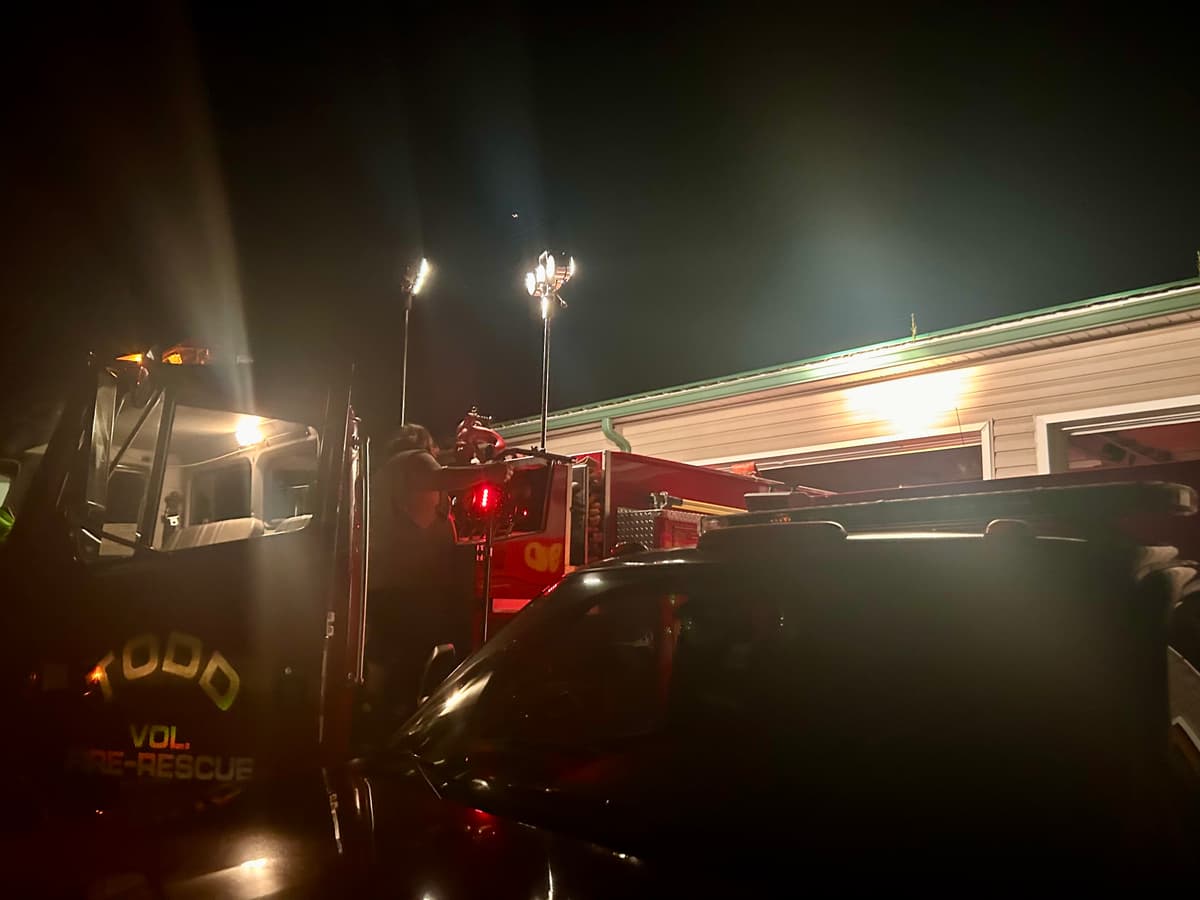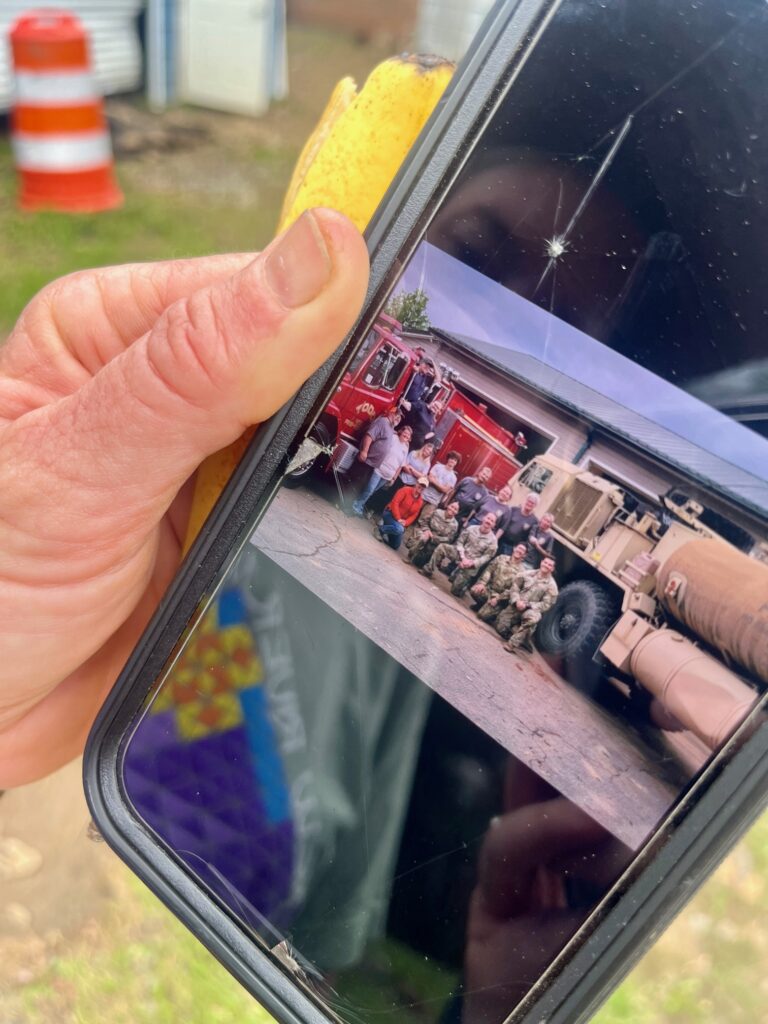Elon Musk’s Starlink Brings Lifesaving Contact to Appalachia in Aftermath of Hurricane Helene
Thousands of Starlink satellites have been installed across some of the most isolated regions since the storm wreaked her devastation.

TODD, North Carolina — Elon Musk may be a politically polarizing figure, but when offering a lifeline that can mean the difference between life and death, his invention transcends red or blue. Starlink, the satellite internet service from Musk’s SpaceX, has become a crucial lifeline in southern Appalachia, devastated by Hurricane Helene.
A few feet from the river, on a bank doused in debris and ruined livelihoods, a handful of locals and volunteer rescue workers gather around a rustic train, a relic of the tiny town’s storied past as a thriving 19th-century timber hub. The attraction? A Starlink satellite dish was installed on its roof, enabling the worried and weary to text friends far and wide and communicate their needs, providing a much-needed sense of calm and smiles in a chaotic situation.
Further up the hill, locals congregate at the Todd Volunteer Fire Department. Rescue workers coordinate plans, and people stop by to collect diapers, canned food, and toothbrushes and spend a few moments checking in on the world around them. Just over 48 hours after Helene struck, rescue workers — nobody is quite sure from where — installed Starlink on the roof of the fire house.
In the days since Hurricane Helene made landfall, thousands of Starlink satellites have been installed — primarily by private rescue groups and aid workers — across some of the most isolated regions severed from the outside world. Recently, many volunteer organizations have switched their missions from search and rescue to installing Starlink as far and wide as possible.
“Last Sunday at nine o’clock, we got a Starlink satellite, and that’s the only thing that allowed us to have communication — not only with each other, but community members have been coming here for internet, they have been able to get in touch with people,” Todd Volunteer Fire Department Chief Bryan Bouboulis tells The New York Sun. “Starlink did that for us. It was phenomenal. Before that, we were just relying on radios. Nobody could communicate, and nothing was going out. Until we had that, we had nothing.”

Mr. Bouboulis pointed out that when we visualize hurricanes, we don’t think of them hitting the mountains — but that’s what happened with Helene, triggering flash flooding, landslides, and thousands of people isolated from help and with little means of reaching civilization to request help or even to let someone know that they were okay.
Without power and with traditional communication infrastructure still largely crippled by the storm, Starlink’s satellite internet service over the past week has provided emergency responders with reliable, high-speed connectivity. This has enabled rapid coordination of relief efforts, real-time updates on rescue operations, and faster deployment of resources to areas in need. Starlink has also empowered residents to reconnect with loved ones and access critical services in communities that are cut off from communication. By bridging the communication gap in these isolated regions, Starlink is proving to be a game-changer, helping to save lives and accelerate recovery efforts.
“Starlink uses satellite-based internet. This makes it far more resilient during natural disasters since a satellite constellation isn’t affected by power outages and storm damage, unlike cell phone towers and cable-or fiber-based ISPs,” advisory solutions director at cyber and communications firm TrustedSec, Alex Hamerstone, tells the Sun. “As long as your Starlink receiver has power, you can connect to the Internet regardless of any physical damage to infrastructure here on Earth.”
The effort is working. For every satellite deployed in some of the hardest-hit areas, a volunteer worker in the Swannanoa region tells the Sun that at least another dozen people can communicate.
After Helene’s battering on September 28, more than 78 percent of cell towers were rendered inoperable in disaster-impacted pockets of North Carolina. The Federal Communications Commission said Sunday that number had fallen to 17 percent — a testament to Starlink and crews working to restore conventional services. While the donated Starlink devices are free, the internet service is initially complimentary. After 30 days, Starlink will transition users to a standard residential subscription.
The endeavor isn’t without hiccups and political finger-pointing.
Last week, Mr. Musk claimed that the Federal Communications Commission had “illegally revoked a grant to SpaceX to supply Starlink kits that “would have saved lives in North Carolina.” The government agency argued that they have a two-step approval procedure for rural subsidies and that SpaceX won the initial bidding step, but in 2022, it chose not to give the contract to Musk’s company upon further assessment.
On Sunday, the Federal Communications Commission somewhat reversed course and granted SpaceX and T-Mobile an emergency temporary approval to enable direct-to-cell capability on Starlink satellites, providing coverage for thousands in need. An agency spokesperson vowed that they are “committed to helping with recovery efforts” and “stand ready to do all that is necessary to return connectivity to hard-hit areas and save lives.” SpaceX said their satellites were already functioning and had begun disseminating emergency alerts to cell phones across all North Carolina networks.
The notion that much of the lifesaving connectivity has come through the private sector, at least in the outside world, is fraught with question marks given that the 2021 Bipartisan Infrastructure Law dedicated $42 billion to build broadband infrastructure in the country’s most remote and underserved areas.
The Federal Emergency Management Agency has quickly announced that several Starlink systems were available for emergency responders days after the disaster struck, with more on the way. The Biden administration also said early last week that dozens of ground-based Starlink devices would be dispatched over the coming days.
Politics, however, is the last thing on people’s minds in some of the hardest-hit spots. The road to recovery is long, with power and water out indefinitely in large swaths of the affected area.
“People don’t realize how much infrastructure the internet in your house or cell phone relies on, and all of that is susceptible to storms and other natural disasters. Constant coverage during a natural disaster is vital, as this may be the only way people who are in the affected areas can find information about what the government is doing to provide help, along with any private relief efforts,” Mr. Hamerstone added. “It’s also the only way to communicate with family and friends, to let them know you’re okay, or to ask for help or to check on someone’s status. When big storms hit, electrical power and cell service are the first to go. This is why satellite-based internet is so important for all communities.”

